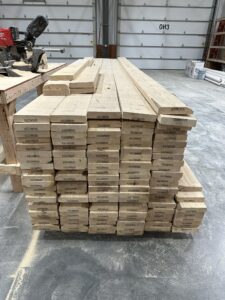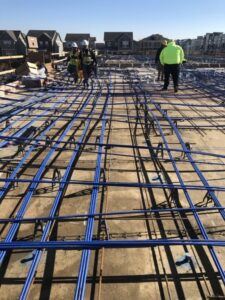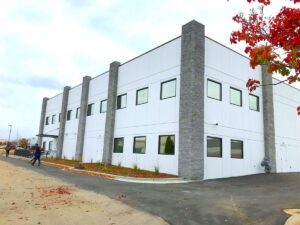Concrete floors in homes and businesses don’t have to be large expanses of gray or covered in tile or carpet. There are several options for finishing the concrete in order to breathe life into it or bring out concrete’s hidden beauty.
Integrally colored – This is the simplest method to avoid a gray concrete floor. In this case a color is selected and added into the mixture prior to the pour. The admixture can be a powder, granule or a liquid. Patios are frequently done with integrally colored concrete because the color won’t fade or chip away. The color range with this option is generally limited to earth tones.
Painted concrete – This is a simple and straight forward option that can be found in basements and low traffic areas. However, there is a fair amount that has to be taken into consideration when painting a concrete floor. Newer slabs often have curing compounds in them that can affect the adhesion of paints. Additionally, the hardness of concrete often makes getting paint to adhere difficult. It can help to rough up the surface with acid in order to get the paint to adhere. Moisture can also be an issue. If moisture is coming up through the slab it can cause the paint to bubble. Paints specifically made for concrete floor should always be used.
Acid stained – Staining concrete creates a varied pattern that is unique to every floor. Staining is difficult and prone to error. Unknown stains or irregularities in the concrete can become quite evident upon staining. Improper or over working can also leave brush and other application marks.
When done correctly, the process creates a color and pattern that is very attractive and that will not fade or peel. It does require regular maintenance in the form of a clear coat sealer or wax depending on if it is outside or inside. This top coat of finish prevents the color from wearing away since the color only penetrates into the concrete so deep. For acid stained floor the colors age generally limited to earth tones.
Dyed – Dyes can be added as part of the acid staining process in order to achieve a greater range of colors, including pastels. This also adds additional depth and layering to an acid stained floor. Care and maintenance is the same as with an acid stained floor.
Stenciled – Stenciling is a relatively new technique used to spice up concrete. To create it a pattern is cut into heavyweight paper which is then placed on the slab shortly after the pour and worked into the surface of the concrete. Next a couple coats of color are worked into the concrete. Once the concrete has had time to cure for a number of hours the stencil cam be removed and the pattern revealed. This is also finished with a clear sealer in order to preserve the finish of the concrete.










